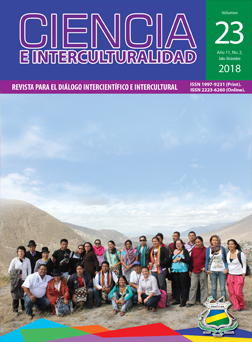Sistemas tradicionales de comunicación en el Pueblo Mayangna, territorio Sauni Bas comunidad de Sikilta, Siuna RACCN 2015-2016
DOI:
https://doi.org/10.5377/rci.v23i2.6568Palabras clave:
Comunicación Indígena, Pueblos Indígenas, Comunicación Intercultural, Interculturalidad, Sistema tradicional de comunicaciónResumen
El presente estudio evidencia que los sistemas tradicionales de comunicación en el Pueblo indígena de Sikilta, relacionan las dimensiones espirituales, históricas y medioambientales, dirigidos por sukias y ancianos de la comunidad como princi- pales protagonistas de estos saberes, prácticas y valores. De acuerdo a los hallazgos encontrados, éste representa un sistema tradicional de comunicación que si bien se mantiene vivo en la comunidad a través de la escucha, el diálogo y la observación, dramáticamente han sido reconfigurados debido a la influencia de la cultura mestiza. En este proceso, la comunicación oral que se transmitía de generación en generación en el seno de las familias y la comunidad, se encuentra debilitada, por lo que se pro- pone que sean los medios de comunicación los encargados de propiciar el proceso de interlocución entre las culturas.Descargas
Los datos de descargas todavía no están disponibles.
Resumen
1141
1141
PDF 774
HTML 275
EPUB 181
Resumen (Audio) 175
Abstract (Audio) (English) 179
HTML 275
EPUB 181
Resumen (Audio) 175
Abstract (Audio) (English) 179
Descargas
Publicado
2018-10-22
Cómo citar
Montoya Leal, Y., & Flores Gómez, C. M. (2018). Sistemas tradicionales de comunicación en el Pueblo Mayangna, territorio Sauni Bas comunidad de Sikilta, Siuna RACCN 2015-2016. Ciencia E Interculturalidad, 23(2), 59–69. https://doi.org/10.5377/rci.v23i2.6568
Número
Sección
Género e Interculturalidad
Licencia
Copyright © (URACCAN)

Esta revista está bajo una licencia de Creative Commons Reconocimiento-NoComercial-SinObraDerivada 4.0 Internacional. Esta licencia permite que otros puedan descargar las obras y compartirlas con otras personas, siempre que se reconozca su autoría, pero no se pueden cambiar de ninguna manera ni se pueden utilizar comercialmente.




